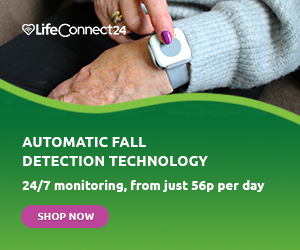Arthritis is one of the 20 most common medical conditions affecting older people. Currently, arthritis affects more than 10 million people in the United Kingdom. Despite common misconceptions, arthritis can affect people of all ages – including children.
Today’s blog will take a closer look at the different types of arthritis, their symptoms, common treatments, and how arthritis can affect your everyday life.
What is Arthritis?
Arthritis is a term that actually refers to hundreds of different conditions that affect the joints, causing painful inflammation. When we think of arthritis, most of us think of elderly people, but the condition can also affect younger adults and children. In fact, there are currently around 15,000 children living with arthritis in the UK. The two most common types of arthritis in adults are osteoarthritis and rheumatoid arthritis.
What is Osteoarthritis?
Osteoarthritis is the most common form of arthritis in the UK, affecting nearly nine million people. It’s most common in people older than 40 and slightly more common in women than men. Osteoarthritis usually affects the hands, knees, hips, and spine.
It begins when the protective cartilage in our joints starts to wear down, making movement more difficult and painful. Once the cartilage thins out, the tendons and ligaments in the joint have to work harder, which often causes swelling. In severe cases, this wearing away of the cartilage can lead to bone rubbing on bone, which may alter the shape of the joint itself.
What is Rheumatoid Arthritis?
Rheumatoid arthritis on the other hand is slightly less common, affecting more than 400,000 people in the UK. Women are three times more likely than men to be affected by this form of arthritis, according to the NHS. Symptoms usually begin between the ages of 40 and 50.
Rheumatoid arthritis is an autoimmune disease, in which the immune system attacks the lining of the joints. As a result, the joints become swollen and painful. The condition usually affects the joints in the hands, feet, and wrists.
Symptoms of Arthritis
Since there are so many different types of arthritis, symptoms can vary from person to person. This means it is especially important to visit your doctor in order to get the right diagnosis.
However, the main types of arthritis do have some symptoms in common. The NHS recommends that you see your GP if you have any of the following symptoms:
- Joint pain, tenderness, and stiffness.
- Restricted movement of joints.
- Inflammation in and around your joints.
- Warm, red skin over the affected joints.
- Weakness and muscle wasting.
Diagnosing Arthritis
Your doctor will usually send you for X-Rays or a blood test. The results of these tests will help determine which condition you have, if any. Sometimes, doctors also use the following tests to help confirm a diagnosis:
- MRI Scan – To detect early problems and show inflammation.
- CT Scan – Provides doctors with cross-sections of the body, giving detailed images of the skeleton and other tissues.
- Ultrasound Scan – To detect inflammation around the joints.
- Synovial Fluid Analysis – Looks at the lubricating fluid from your joints, which can help detect any inflammation, infection, or gout.
- Biopsy – A small amount of tissue is removed and analysed.
- Urine Test – This helps with diagnosis or to monitor drug treatments.
Read More: Symptoms of Arthritis
Causes of Arthritis
The causes of arthritis are hard to pinpoint. Genetics can be a factor in some cases; evidence suggests that rheumatoid arthritis can run in families. Lifestyle also plays a part. Obesity, for example, increases the risk of osteoarthritis in the knees, hips, and spine. Similarly, losing excess weight can slow the progress of osteoarthritis once it has set in.
Strenuous or repetitive physical work, smoking, and eating lots of red meat are also risk factors.
However, in truth, arthritis can strike suddenly without any warning or obvious trigger.
Read More: Causes of Arthritis
Is There a Cure for Arthritis?
Unfortunately, there is currently no cure for arthritis. However, there are lots of treatments and exercise routines that can slow the progress of the condition. Once you’ve been diagnosed, your doctor will probably recommend a variety of treatments including medication, physiotherapy, and exercise.
Treatment for Arthritis
The kind of treatment you receive will depend on which form of arthritis you have. Here are the main treatments for the most common forms of the condition.
Treatment for Osteoarthritis
Doctors often prescribe painkillers and corticosteroids to those with osteoarthritis, but surgery is available for more severe cases. Surgical treatments include joint replacements, joint fusion, and osteotomy. This process sees the bone cut and re-aligned.
There are also lots of supportive treatments available, which can help to reduce pain. One example is Transcutaneous Electrical Nerve Stimulation (TENS), which uses a special machine to send electrical impulses through sticky patches attached to the skin. This process numbs the nerve endings in the spinal cord, which are responsible for controlling pain.
Other treatments include:
- Hot and Cold Packs – Applying these packs to your joints can relieve the pain. This is sometimes known as thermotherapy or cryotherapy.
- Manual Therapy – This is provided by a physiotherapist and involves stretching to keep the joints supple.
- Assistive Devices – Canes, insoles, and walkers can protect the joints and aid you in daily tasks.
Treatment for Rheumatoid Arthritis
Treatments focus on slowing down the condition’s progress and minimising any swelling of the joints. As well as medication, doctors also recommend physiotherapy and regular exercise.
Physiotherapy can help to improve your fitness and muscle strength, as well as making your joints more flexible. An occupational therapist can help you protect your joints whilst at home and at work.
Furthermore, there are lots of exercises that you can do by yourself in order to ease pain in your knees, back, neck, shoulders, and feet. Guides for these routines can be found on the Versus Arthritis website (formerly Arthritis Research UK and Arthritis Care).
Learn More: Treatments for Arthritis
Living with Arthritis
For people living with arthritis, everyday tasks like writing or making a cup of tea can become challenging. In extreme cases, any form of movement can be difficult. If you have arthritis in your knees, then it may become difficult for you to walk or get up out of your chair. If your hands are affected, you may struggle to prepare a meal and eat it with a knife and fork.
Fortunately, you can manage your symptoms with careful thought and slight adaptations. One of the most important things is to keep your joints moving and your muscles strong. However, you also need to balance this out with rest, especially if your joints are inflamed.
Keep Moving
You should try to put your joints through a full range of motion at least once a day to combat stiffness. This requires physical activity, which is also a great way to stay fit and healthy. Regular exercise also reduces your risk of many serious medical conditions. However, some high-impact exercises can cause flare-ups in arthritis symptoms. Try swimming, walking, or gentle cycling, all of which put less strain on the joints.
Notice how much your joints can handle and learn when you need to rest. Be careful to minimise stress on your joints while carrying out everyday tasks. You should always spread the weight of an object that you are carrying, for example.
Furthermore, the NHS has some tips for arthritis sufferers to protect themselves at home:
- Keep important items in easy to reach places.
- Use a handrail to help you get up and down the stairs.
- Use long-handled tools to picks things up or to clean.
Diet and Nutrition
It is also very important to stick to a healthy diet if you have arthritis. Eating healthy foods will give your body the nutrients it needs and help you to maintain a healthy weight. Your diet needs to include the following:
- Beans, pulses, fish, eggs, and meat – for protein.
- Milk and dairy foods (or dairy alternatives like soy milk) – for protein and calcium
- Rice, pasta, bread, and potatoes – choose wholemeal varieties for more fibre, vitamins, and minerals.
- Fruit and vegetables – aim for 5 portions a day to get enough vitamins, minerals, and fibre.
Managing Weight
Eating healthily and exercising can help you maintain a healthy weight. If you are overweight, losing excess weight can help you to manage arthritis symptoms. Besides your weight, the other most important thing to consider is whether your diet gives you all the vitamins and minerals you need. Calcium, vitamin D, and iron are especially important.
Read More: Living With Arthritis
Stay Safe at Home
Our personal alarm service is ideal for people with conditions like arthritis. If you have a fall at home, simply press the red button on your pendant and our 24-hour Response Team will assist you. A personal alarm can be a great way to find peace of mind, both for you and for your loved ones.
For more information about our alarms, please speak to our friendly advisers on 0800 999 0400. Alternatively, fill in our Contact Us form and we will get back to you as soon as possible.
For further information about other common medical conditions, please see our in-depth guide
VAT Exemption
If you have arthritis, you are eligible for VAT Exemption on your new personal alarm from LifeConnect24. This means you will not pay any VAT at all on your alarm system.
To find out more about the VAT exemption criteria, read our guide here.
Editor’s Note: This post was updated on 29th July 2022 to reflect current information.



After checking with my mother in law Betty Kennedy we have established that she has both arthritis and osteoarthritis so does therefore for the VAT exception Best Regards Raffaela Kennedy
Dear Raffaela, Thank you for your comment. I can confirm that as your Mother-in-Law has arthritis and osteoarthritis she qualifies for VAT exemption. Our personal alarm service is available with VAT exemption for those who have a long-term medical condition or disability. For more information on VAT relief please visit: https://www.lifeconnect24.co.uk/vat-exemption/. Should you have any further queries, please do not hesitate to get in touch. Kind Regards, LifeConnect24